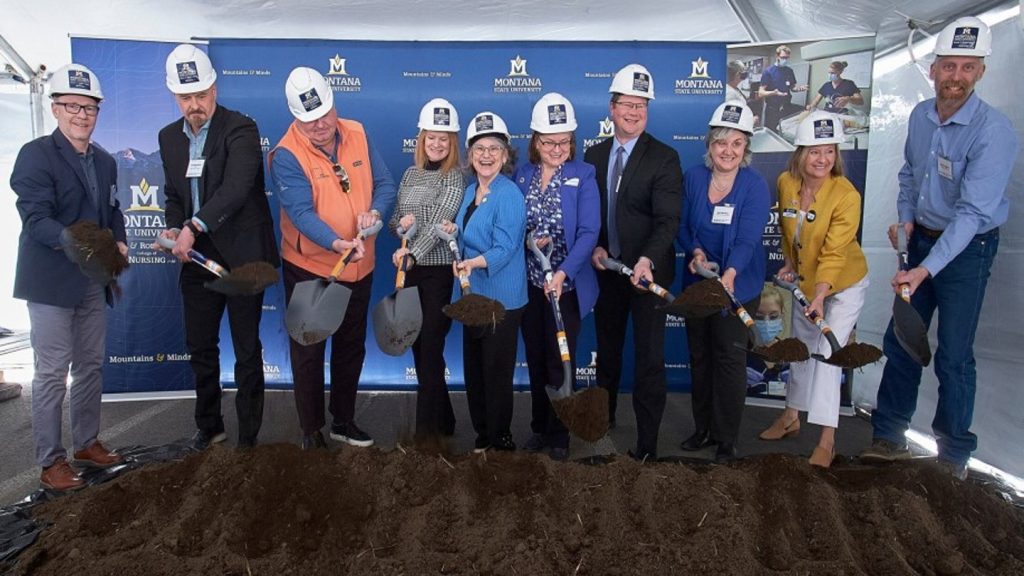With only 14 months to go until the kick-off of the 2012 Summer Olympic Games in London, preparations for the event are fully underway. While 1.8 million Britons are waiting to get a lot in the first round of ticket sales, some of the buildings hosting the Olympic events are yet to be completed.
The extensive planning process for the Games started in 1997, with the British Olympic Association preparing the proposal for the bidding process in 2005. Using a mixture of existing sporting facilities, newly built and temporary venues in the Olympic Park in East London and the neighbouring Lower Lea Valley, the UK capital aims to provide the location for a memorable event.
In 2006, the Olympic Delivery Authority (ODA) was established and made responsible for the delivery of the infrastructure and sporting venues in five of the poorest boroughs in East London. Fighting challenges such as the global recession and massive public spending cuts, the ODA has set the goal to fill the Olympic Park with the best in contemporary sporting architecture – leading with the design of the Olympic Stadium.
In 2008, at the peak of the global financial crisis, the construction of the Olympic Park began. Since then, the ODA has been plagued by funding issues: the budget of £9.345bn took several hard hits, in particular during the public spending cuts made by the Conservative-Liberal Coalition Government.
In addition, the authority has been forced to relocate £702m for the athlete’s village and media centre, after private partners failed to come through after the financial slump in the private sector. But despite all setbacks, ODA officials say that the construction of the venues is progressing on time and budget, with an anticipated final cost of £7.301bn.
See Also:
The Velodrome
The first one of the new Olympic venues to be finished at the end of February 2011 was the 6,000-seat Velodrome. Dubbed the ‘pringle’, due to the shape of its roof designed to reproduce the geometry of the cycling track, the Velodrome forms the centrepiece of a larger cycling circuit, including a BMX course.
How well do you really know your competitors?
Access the most comprehensive Company Profiles on the market, powered by GlobalData. Save hours of research. Gain competitive edge.

Thank you!
Your download email will arrive shortly
Not ready to buy yet? Download a free sample
We are confident about the unique quality of our Company Profiles. However, we want you to make the most beneficial decision for your business, so we offer a free sample that you can download by submitting the below form
By GlobalDataEstimated at a cost of £20m during the bid in 2004, the final construction price was later raised to £105m. The design team, consisting of Hopkins Architects, Expedition Engineering, BDSP and Grant Associates, began the construction work in 2009, trying to include sustainability elements and the world’s fastest cycling track by tailored geometry and environmental conditions. Renowned track designer Ron Webb oversaw the design and installation process.
At the opening of the Velodrome on 22 February 2011, ODA chairman, John Armitt, said that with the completion of the first Olympic Park venue the authority had reached its biggest milestone to date. "The striking architecture of the Velodrome and the medal prospects of our world-leading cyclists mean the venue will become one of the defining images from the Games, and a landmark new building for future generations to enjoy."
The Olympic Stadium
The centrepiece of the London Games is the Olympic Stadium, located at Marshgate Lane in Stratford. Hosting the opening and the closing ceremony as well as the athletics events, all eyes will be on this arena. Completed in March 2011, the construction of the £537m project took just under three years.
Described as the ‘beating heart’ of the Olympic Park by chair of the London Organising Committee of the Olympic Games (LOCOG) Sebastian Coe, the stadium will seat 80,000 spectators. More than 5,000 reinforced concrete columns provide the foundation to support the stadium structure, 112 steel rakers and 12,000 pre-cast concrete terracing units hold the spectator seating in place.
The roof, covering two thirds of the seating, is made from a lightweight polymer based membrane. 532 individual floodlights housed in 14 towers light the arena 70m above the field of play. Around 700 rooms and spaces are located within the stadium.
The design and construction bid was won by Team Stadium in January 2007, led by construction firm Sir Robert McAlpine, with Populous as the architect headed by conceptual artist Peter Cook, and Buro Happold as the designer of the civils, structural and building services work. In total, 5,250 people from over 240 UK businesses have worked on the project, which began in May 2008.
The elliptical stadium, containing around 10,000t of steel, has excited Olympia officials. "What a fantastic stadium," commented IOC coordination commission chairman Denis Oswald. "As host of the opening and closing ceremonies, this arena will provide the first and last memories that many people will have of London’s Games and I have no doubt that it will provide the perfect stage."
Secretary of State for Culture, Olympics, Media and Sport Jeremy Hunt described the completion of the stadium as another ‘landmark day’ for London 2012, showing that the UK was at the forefront of the construction world.
The public, however, had mixed responses to the stadium. The design was promoted as an example of sustainable development but critics questioned both its aesthetic value as well as its suitability as a national icon, especially when compared with the Beijing National Stadium.
Architecture critic at Building Design Ellis Woodman, for instance, wrote of the design: "The principle of it being dismountable is most welcome … it demonstrates an obvious interest in establishing an economy of means and as such is the antithesis of the 2008 Olympic stadium in Beijing. But while that’s an achievement, it’s not an architectural achievement. In design terms what we’re looking at is pretty underwhelming."
Times critic Tom Dyckhoff, backed Woodman’s view: "In years to come, historians will use the architecture of the 2008 and 2012 Olympics as a cunning indicator of the decline of the west and the rise of the east." He went on to describe the design of the new stadium as ‘tragically underwhelming’.
Another point of criticism is the fact that there are no food outlets in the arena itself. The creators, however, argue that this reduces the need for kitchens and gives a higher level of fire protection associated with cooking. Instead, restaurants, cafes and facilities for merchandising are located in capsules arranged outside the stadium, inspired by the ‘fan zones’ at the 2006 World Cup in Germany.
The Aquatics Centre
Another one of the ambitious sporting facilities is the new Aquatics Centre, under construction in the Olympic Park since July 2008. Designed by Pritzker Prize winner architect Zaha Hadid and build by Balfour Beatty, Ove Arup and pool architects, S&P, the centre has two 50m swimming pools and a 25m diving pool.
During the Games 17,500 spectators can be seated in the centre. As with the Velodrome, the roof is the eye-catcher of the arena. Designed in a sinuous S-shape, inspired by the flow of water, it has already been acclaimed to become a new landmark and sculptural masterpiece in London. The column-free roof spans 11,000m², is 100m high, weighs 2,800t and is made of aluminium-covered steel.
The estimated budgeting of the centre was also much lower (£75m) than the end-cost of £242m. Moreover, the original design, which was submitted in 2005, had to be modified as the building was too large for the allocated area and further exceeded the budget. The final cost of the centre, however, will most likely not be known before its scheduled completion later this year.
Big buildings, big expectations
Big events such as the Olympic Games are not only about sports and the athletes themselves, they also stir up a lot of national pride and bring architects and designers into the eye of the creative world. Showing off big and outstanding designs and sporting facilities is naturally part of the game.
Spectators and visitors, however, usually do not realise how much planning and organisation goes into the construction of the sporting arenas. London’s Olympic master plan has not yet been fulfilled and the ODA has had to cope with different problems throughout the run-up process: design, planning and construction of the new facilities have been hampered by budgeting, land difficulties and also over-high expectations. With only 14 months to go London’s probation time is not over yet.





